I’ve written more about Destiny than any other video game I’ve ever played. I’ve reviewed every expansion. I’ve written at length about raids and guns and competitive arenas. I’ve written about the community’s often tortured emotional relationship with the game, as well as my own.
Above: A scene from that launch trailer with Gus Fring.
With Destiny 2 looming on the horizon, I decided to go back through Kotaku‘s “Destiny” tag to try to find where it all began. After paging through a list of when I first wrote about it.
An amusing excerpt:
I had shared (and still share) Patricia’s concerns that the game is just another shooter in a sea of shooters, and I still think it has a ways to go to pull me away from other similar games this [spring], like Far Cry 4.
Ha. I only wound up spending more than a thousand hours on one game from 2014, and it sure wasn’t Far Cry 4. Over the course of those thousand-plus hours, I’ve had a more personal relationship with this game and its community than any video game I’ve ever played. Before we move forward, it’s time to look back.
September 2014: A Buffet Of Exploitation
A few weeks after Destiny came out, I reviewed it. I was enamoured of many of the game’s fundamentals, but I kept coming back to how Bungie had designed this slick, fine-tuned engine of player exploitation.
To play Destiny is to willingly give yourself over to a machine, a machine terrifying in the slickness of its construction and the single-mindedness of its purpose. You may find yourself hating this game as much as you like it, and unable to stop playing nonetheless. Destiny coaxes players into a carefully-wrought network of rewards, roadblocks, checks, and balances, pushing them ever onward into more challenging arenas while slowly rewarding patience with experience points, new abilities, and new weapons.
Submit, the game demands. Submit and you will be rewarded.
Well, you will be rewarded if we feel like it.
I was one of the first people at a big site to cover The Loot Cave, an exploit that would go on to become a meme that other games would be referencing for years.
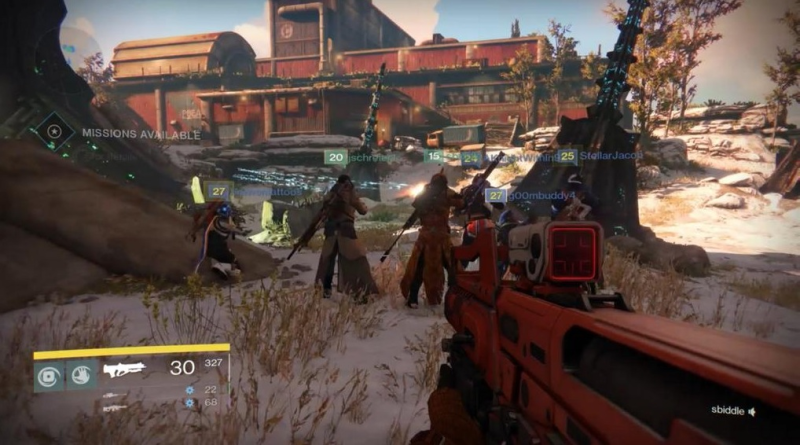
I still remember standing in front of that cave alongside my colleague Jason Schreier while we mowed down wave after wave of enemy grunts. It made for a good metaphor for how players were approaching the game at the time.
The Loot Cave is what’s known as an exploit, a trick the game’s developers didn’t anticipate that allows players to bypass the game’s carefully-scaffolded progression system and earn experience points and gear faster than the developers intended. That so many players would so eagerly latch onto an exploit like Destiny‘s Loot Cave only makes sense, given the game in question. Destiny itself is brazenly, almost inhumanly exploitative, so it’s only natural that players would take every opportunity to exploit it right back.
That concept — the exploitation of this exploitative game — followed Destiny throughout its lifespan. Time and again I’ll think, “Remember how, back when the game launched, you’d decode a purple engram and get a blue item out of it?” I’ll shake my head, mostly because the Destiny of today is nowhere near as frustrating. But the fact remains that at one point, people at Bungie thought that was a good idea. Destiny 2 may finally shake that specter, but the first game never really did.
Spring 2014: The Raid: Redemption
In the weeks and months that followed, Destiny began to change. Bungie nerfed auto rifles and patched the loot cave, and while players attempted to find other caves, none of them had the same staying power. “Loot Cave 2.0!” screamed a hundred YouTube thumbnails, inevitably pointing players to some overly complicated enemy spawn that just wasn’t the same.
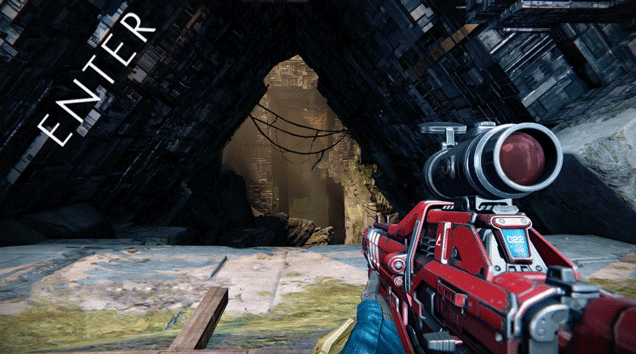
As Bungie taketh, Bungie giveth, and as time passed it became clear that the Vault of Glass raid, which Bungie added a little while after launch, was more than just a neat little addition. I had played some of the raid in my review, but finally completed it a week or two afterward. I later wrote about how it was the best thing in the game.
In the process, I did a long Q&A with a fellow named Luke Smith, a former Kotaku writer who at the time was the lead designer of the raid. Smith, of course, would go on to climb to great heights at Bungie, first directing the acclaimed expansion The Taken King and most recently heading up Destiny 2.
“One of the things that we’ve talked about a lot [at Bungie] is that one of the things that binds you together in that activity is the collective failure of your effort,” Smith said, laughing. “Your effort, forcing you to try again and again, update your strategy. It’s building camaraderie.
“I’ve talked a lot about how the raid is a lot like a ropes course,” he said. “It’s us teaching you how to be a group. If you look at how the activity is building groups and pulling people together, we hope that people play the raid together and end up meeting someone new and having a new friend, someone new to play with.”
As much as Smith’s talk of team-building and friendship sounds like touchy-feely PR-speak, it’s also accurate to my experience of the raid. The Vault of Glass has been the sort of challenging, rewarding team-challenge that the rest of Destiny promised, but generally didn’t quite manage to be. It has brought me closer together with people I barely knew, and has given me a feeling of collective accomplishment that I haven’t gotten from a video game in ages.
We came, we saw, we blew up the giant robot. More please, Destiny.
Reading through Kotaku‘s copious Destiny coverage from this period is illuminating. We would write about almost anything — a list of a few good shaders got almost 150k pageviews — and everything we wrote would draw huge numbers of readers. People loved to hate on Destiny, but they also loved to read about it.
Among the many short and/or silly posts we ran was a ranking I did of gun names, the top ten of which I think stand tall against any of the guns Bungie has subsequently added to the game.
10. Fate of All Fools
9. The Swarm
8. Doctor Nope
7. Grim Citizen III
6. Universal Remote
5. Plan C
4. Light/Beware
3. The Comedian
2. Super Good Advice
1. Gjallarhorn
I had forgotten some of those names — Doctor Nope! Strange Suspect! — and really love all of them. Destiny‘s gotten a lot of good gun names since it came out, but the launch names were the best.
Summer 2014: So Begins Our Discontent
December 2014 was not a good month for Destiny. Fans were starved for new stuff to do, and The Dark Below expansion fell well short of our hopes. Not only did it have a short and largely unsatisfying narrative campaign, it ruinously overhauled the exotic item system in what was possibly the most player-unfriendly move Bungie pulled in Destiny‘s three-year lifespan.
In January 2015, the game was in a bad place. “The player’s greatest adversary in Destiny isn’t an alien warlord or a reanimated moon monster,” I wrote in a four-months-in review update, “it is Bungie themselves.”
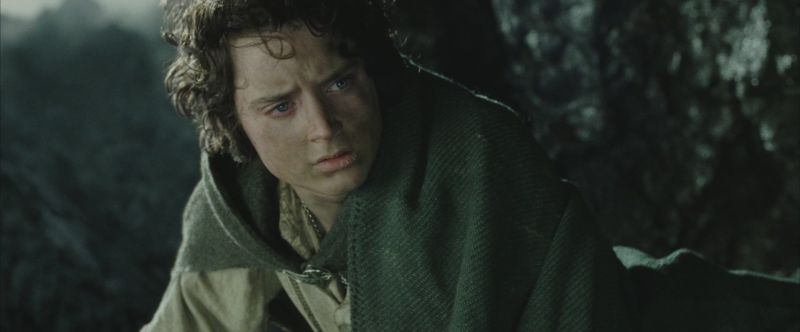
At the time, it had become clear that Destiny‘s biggest flaw was that there simply wasn’t enough to do:
There’s a scene in The Lord of the Rings where Frodo tells Sam that due to the corrupting power of the One Ring, he feels “sort of stretched, like apricot jelly scraped over too much toast.” Or something like that. Anyway, that’s Destiny: delicious apricot jelly scraped over too much toast.
Destiny‘s lack of “content,” for lack of a better word, is the source from which the game’s other problems flow. The maddening weekly currency caps, the ceaseless repetition, the bizarre upgrade requirements, the stingy loot system: All are designed to force people to sink dozens of hours into a game they’d otherwise blow through over the course of a weekend.
With The Dark Below, Bungie has performed a bleak magic trick: They have transformed a meagre handful of story missions, a single strike, and a single raid into dozens and dozens of hours of gameplay, simply by carefully scraping the whole thing over a time-consuming levelling process.
In February, I and many other players had had enough. Patience was wearing thin throughout the community, and many players were taking breaks.
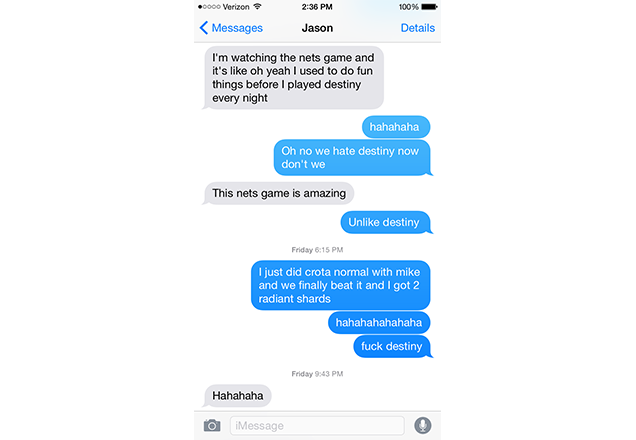
Jason and I have a sad realisation in early 2015.
As I wrote about at the time, I decided to take a break, too.
Oh, shit, I’ve started playing Destiny for the wrong reasons. In the past, I used to hassle Jason when he’d say there was “no reason” to do some mission or other. What he meant was, there’s no useful loot we can get out of it. He was working under the assumption that we only play Destiny for the loot.
“But it will be fun!” I’d counter. This game is, after all, fundamentally very fun to play. Surely that’s enough?
Lately, my mentality has changed. I find myself performing cold mental calculations to determine the worth-itness of a given undertaking. I always did that, mind you, but nowadays, it’s my primary calculation, rather than a secondary one.
Even back then, there was plenty of room for optimism. This was right around when Bungie’s Luke Smith wrote an uncharacteristically forthright NeoGAF post addressing many of the problems players were identifying with The Dark Below and outlining new approaches they’d be taking with the next expansion and beyond.
Spring 2015: The Wolves Arrive Just In Time
Destiny fans were desperate enough for new things to do that any expansion likely would have made us happy. In retrospect, House of Wolves was really just a stopgap until the far larger and far better Taken King launched just a few months later. It was a welcome stopgap, however, one that made the game a hell of a lot better.
Bungie introduced the infusion system that let us level up our old, previously obsolete weapons. They fixed the exotic levelling system. And most importantly, it finally felt like there was enough to do:
It’s freeing, in a way — I can let go of the urge to do everything and simply do whatever I want. I’ve already stopped thinking of Destiny as a big weekly to-do list. Instead, it’s just a big list of things I might go do. And that’s just for a PvE player like me — I haven’t even touched on the new Crucible maps or the cool-sounding Trials of Osiris, which I’m looking forward to trying and which will likely just add one more thing to do.
In the past, I’ve argued that Destiny‘s biggest flaw was the fact that there wasn’t enough to do. The infuriating loot system, the weird RNG, the repetitive bosses, the miserly drops; all were symptoms of the fact that Bungie was stretching a 10-hour game into a 300-hour game, and it showed.
With House of Wolves, Destiny finally feels big. It feels big for hardened veterans like myself, and it must feel huge for anyone deciding to start fresh. If you’ve been holding off on Destiny and are considering getting into it, you’ve picked a damned good time to start.
Of course, none of us had any idea that the game was about to get way bigger, nor that The Taken King would be a sequel in everything but name.

The wave-based PvE challenge Prison of Elders was the most promising — if ultimately disappointing — experiment in House of Wolves. It may not have been as enduring as we’d hoped, but it did lead to at least one nice story of friendship and teamwork. As my team and I struggled to overcome a challenging PoE boss, a friend of ours came into our party and talked us through it without even joining our game. He helped us strategize, coordinate, and win.
The experience captured much of what I like about Destiny as a whole: The way the game can feel like a seat-of-your-pants battle, even when you’re facing challenges you’ve overcome before. The feeling of relief when your team bests a challenge you didn’t think you could handle. And in particular, the sense of community it can engender — the fun of learning to work with a stranger from LFG, and the way the Destiny community freely shares information in order to help everyone do better.
The story doesn’t always play out the way it did last night. Sometimes you can’t find a workable strategy to save your lives. Sometimes the LFG person you add is a jerk. Sometimes you simply fail over and over again, and eventually give up and go to bed. But every now and then, it works out just right.
In Destiny, high-level players will occasionally team up with low-level players to help them complete tough challenges and earn rewards they’d be unable to get otherwise. This practice is known as “carrying” or “sherpa-ing.” There’s a sort of unspoken karma attached to it — many players are happy to carry lower-level players, because we all know that at some point down the line, we might need some carrying ourselves.
Last night, my Destiny group got carried, but it wasn’t by a higher-level player who fought alongside us. Rather, we were carried by a friend who gave us the knowledge we needed to carry ourselves. That’s Destiny at its finest.
Friendship! Positivity! OK, about that…
Interlude: Throw Money At The Screen
Players may have been largely happy with House of Wolves, but shortly after the expansion, things took a turn.
Bungie had already begun talking about The Taken King, their planned spring mega-expansion. At E3 in Los Angeles, Taken King director Luke Smith made an offhand comment about how players would “throw money at the screen” for the special emotes they’d locked behind The Taken King collector’s edition. It triggered an uproar among players that was, as I argued at the time, about a lot more than a couple cosmetic items or even just Smith’s comments.
This week, Destiny fans are upset. That anger isn’t about any one thing; it’s about a hundred things. It’s about a dozen smiling Bungie Weekly Updates that joked about legitimate player grievances. It’s about a hundred small design decisions that wasted our time, or robbed us of rewards, or left us feeling like we’d spent an evening in the fruitless pursuit of nothing at all. It’s about the gnawing sense that we’ve spent a year playing the worst version of our favourite game and that its brighter future may paradoxically make us regret having been there from the start. It’s about how our relationship with this game that we love — and we really do love it! — can so often feel unbalanced and unhealthy.
In the end, Smith apologised, Bungie made the cosmetic items available for separate purchase and, most crucially, The Taken King turned out fantastic. (We’ll get there.) Throw-Money-At-The-Screengate was both a low point and, arguably, a turning point for relations between Bungie and their most ardent fans.
Winter 2015: The Crucible Takes Centre Stage
I’m not sure if it was House of Wolves‘s newfound focus on competitive PvP play with the addition of Trials of Osiris, or my own desire to finally get into a competitive online shooter, but the winter of 2015 was when I went all-in on the Crucible.
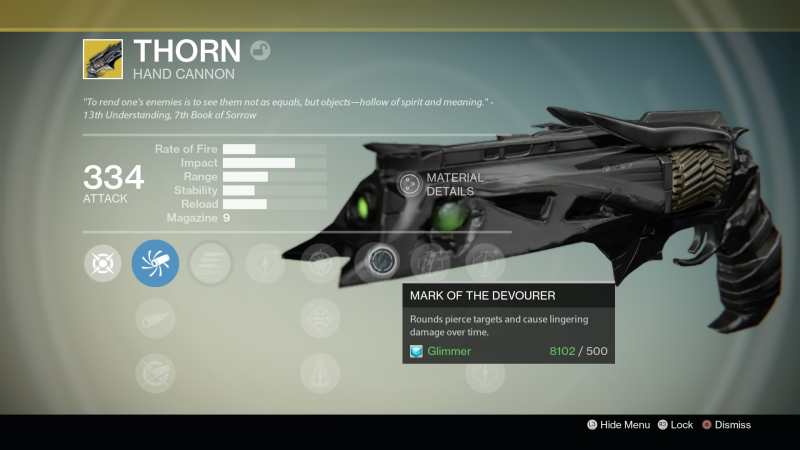
It all started with Thorn. At the time, the stinging hand-cannon Thorn was one of two dominant guns in the PvP meta, which made it an excruciating weapon to go up against. In order to get one, you had to do an arduous quest that involved getting kills in the Crucible with unlikely weapons. If you died while the quest was active, you lost progress.
It was daunting, but by finally completing it, I realised how brilliant the Thorn quest really was. It forced me to play “like a dick,” in my own words, but as it turned out, dicks win.
Shortly after starting it, I joked to my clan-mates that the Thorn bounty is perfect because the most assholish gun in the game forces you to play like an arsehole in order to earn it. After finishing the bounty, I’d say that was half-right — I was patient when other players were aggressive. I was cheap and bloodthirsty, and more concerned with my own kills than I was with trying to take control points. But I wasn’t actually hurting my team; I was helping us win.
I wasn’t taking any control points, but I was still regularly in the middle or near the top of my team’s leaderboard. I soon realised that our victories weren’t in spite of my careful, ruthless play, they were aided by it. Kills in Control still count toward your team’s score, and deaths help the other team. By relentlessly killing the other team while avoiding death whenever possible, I was playing well.
At the same time, Destiny had changed in a few other interesting ways. Thanks to the new infusion system, “vintage” guns that you couldn’t get anymore were becoming precious commodities. A gun you got back in November might have perks that it could no longer roll in May of the next year, meaning that there were players that had small but meaningful advantages you could never match.
I think back to the many guns and pieces of armour I’ve dismantled with sadness. Did I thoughtlessly delete a weapon or piece of armour that, when ascended, would have put my current gear to shame? Probably. Did I need the vault space? I did. Well, shit. So it goes.
As PvP became more of a focus, Destiny‘s woeful lag situation — or “latency” as the developers at Bungie would testily remind us — was becoming more difficult to ignore.
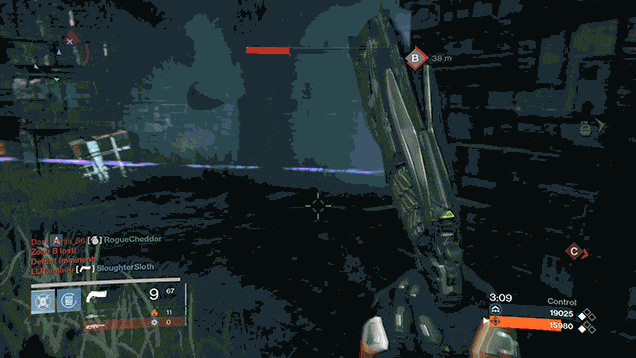
With the House of Wolves expansion, Bungie seems to be pushing players more into PVP, trying to get everyone using all the parts of the Destiny buffalo. It’s worked, at least for me — I’m now deeply invested in Crucible and in improving my game. I’m certainly having enough fun to justify the time I’ve spent practicing and competing, but it sure would be nice to see Bungie do something that actually takes care of lag once and for all. As it stands, Destiny‘s lag situation is a huge bummer.
As it happens, Bungie is promising a tweaked networking approach that they say will reduce “redbar” players and improve latency in the Crucible for Destiny 2. I’m sceptical, but hopeful.
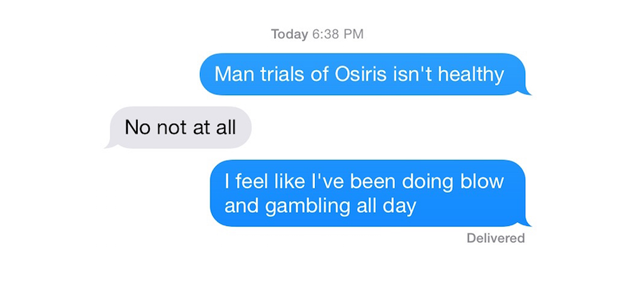
Above: Jason and I discuss Trials.
All this Crucible focus was driven by one thing: The Trials of Osiris. Jason Schreier and I became deeply obsessed with the 3v3 weekend event, finally making it all the way to Mercury in early July. Shortly after that, I wrote about how Trials had become the new best thing in Destiny, though not as unequivocally as the Vault of Glass had been the previous spring:
Trials of Osiris may be the new best thing in Destiny, but it still only works as a part of a greater whole. It’s the mother of all challenges, but it can only be that because it exists within the ecosystem that makes up the rest of the game.
In other words: Trials is the peak of Destiny, but there really is a mountain underneath. I like that the contest doesn’t run all week — it makes it feel like the special event that it is. Recently I’ve been spending my downtime practicing in regular Crucible, trying new character builds and strategies, casually working through PvE stuff, and mentally preparing for the weekend. As I do that, I’m reminded of all the things I like to do in Destiny, and how relaxing and fun it can be.
Trials of Osiris has exposed the flaws, imbalances, technical problems, and exploits that have plagued Destiny’s competitive PvP for the better part of a year. It has divided the game’s community and left a good number of players feeling excluded. At the same time, it has highlighted just how fun, focused, and intense Destiny PvP can be, and it has converted this previously PvE-only player into a Crucible diehard.
One last thing: for all that I talked about Thorn, I grew just as enamoured of its counterpart pistol The Last Word and the epic story of the men who wielded both guns. The tale of Shin Malphur and Dredgen Yor remains the best story from Destiny‘s hidden lore.
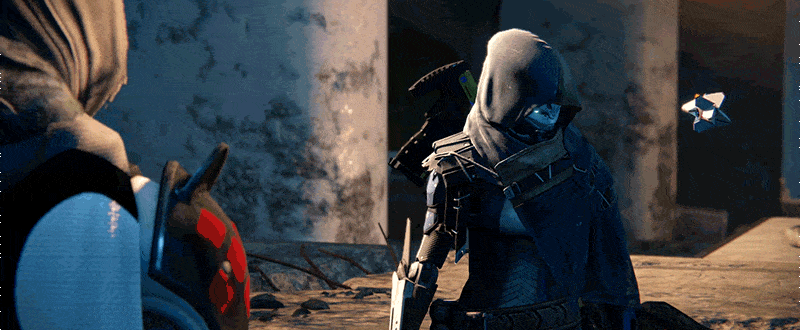
September 2015: The Taken King changes everything.
It’s remarkable that The Taken King came out mere months after House of Wolves. 2015’s timeframe feels incredibly compressed in retrospect, particularly given how long the game went without equally meaningful additions throughout 2016.
When The Taken King launched, it was immediately apparent that this was just the sort of hefty overhaul the game needed. In fact, popular sentiment began to turn toward resentment that the game hadn’t been this good in its first year. I actually disagreed at the time, though I can still understand why players might have felt that way:
Over the past month I’ve often seen people refer to year-one Destiny as a “paid beta”. The implication is that players like me were suckers enough to go along with a cynical ploy to milk us for as much money as possible, voluntarily playing a bad game in order to help Bungie and their publisher Activision re-sell us a better version a year later. The Taken King, this argument asserts, is what Destiny should have been all along.
While part of me understands where those people are coming from, another part of me bristles at their argument. The Taken King could never have sprung fully-formed into the world, and its bevy of small and large improvements could never have manifested without months of noisy feedback from the game’s most devoted players. It is an argument built on fantasy logic that does disservice both to the truth of how people play games and to the truth of how people make them.
Those year-one players were not rubes who went along with a clever marketing scheme; we were passionate fans who played the shit out of a game that we loved. Yes, we often loved it in spite of itself. But we did love it. Year-one Destiny was no beta — it was a fascinating, frustrating, often jubilant and regularly beautiful shared excursion into one of online gaming’s unexplored corners. Judging by the results of its first major overhaul, it was a more successful maiden voyage than we’d realised.
Destiny has largely been defined by the pointy, passionate, often adversarial relationship between its creators and its players. The push and pull between the two has never quite reached an equilibrium, and it likely never will. After a year of missteps and half-recoveries, Bungie has found their firmest footing since last September. The Taken King’s creators have looked their players in the eye and confidently laid down a convincing vision of what Destiny has and will continue to become.
This new status quo is temporary; things will almost certainly change. Bungie will screw up, players will revolt, and whatever precarious peace may have existed will tumble once more into disarray.
For now, though, a moment of relative calm. Destiny‘s players and Destiny‘s creators both have what they want: A better version of Destiny.
Not only was the game better, there was so much of it! In addition to the nifty story missions and the terrific (if maybe overly complicated) raid, my favourite thing Bungie added was the arcane exotic weapon quests like the fantastic, excruciatingly difficult Black Spindle Challenge.
Bungie added a lot of things to the game, but they also removed one major component: voice actor Peter Dinklage. His replacement Nolan North fit so comfortably into the role of your robot helper Ghost that it’s easy to forget how much Dinklage’s weird line-readings defined Destiny‘s first year. At the time I made a video tribute to Dinklage’s performance that is fun to watch now:
For me, September through November of 2015 was peak Destiny. It was the game at its creative best, where every week it felt like there were fascinating new things to do and talk about. I’ve never played a game as obsessively as I did during those three months. Which, of course, led to burnout.
November 2015: Burnout In Paradise
“For Two Months, All I Played Was Destiny“, went the headline. /”I’m Taking A Step Back”. Somewhere in there, my relationship with Destiny went toxic. I indulged the addiction for a while, curious where it might lead me. I’ve never been properly hooked on a game like that, and The Taken King was the closest I let myself get to problematic play.
On various Destiny message boards, lots of hardcore players are saying similar things. The situation today is in some ways similar to the wall we all hit last February, five months into year one. In other important ways, it’s different. I feel more at peace with the ebb in my playing this time around, and much more confident that Bungie will do something cool to get me playing again, probably sooner rather than later.
I’m still processing the weeks from mid-September to the end of October, and getting my head around just how thoroughly hooked on Destiny I allowed myself to become. I mostly feel relief that Destiny has run out of ways to keep me playing: If the game maintained a content crescendo like the one we saw in September, I’m not sure I’d have the stamina or the bandwidth to keep pace.
Unlike the wall I hit the previous February, however, I was more at peace with this one. I didn’t need the game to give me a ton of constant things to do. I was ready to play something other than Destiny.
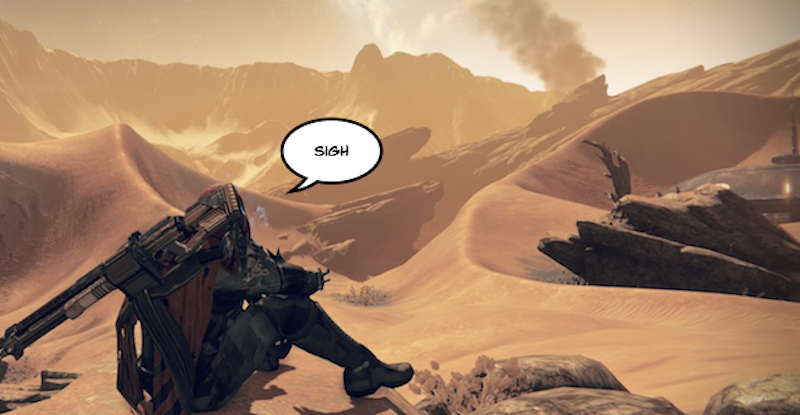
In the intervening months, my colleague Jason Schreier had published a fantastic reported piece telling the messy, true story behind the making of Destiny.
The article increased my sense of distance from the game, as I came to better understand why the Destiny of 2014 had been the game it was. In that article, Jason also confirmed that Bungie was planning a sequel to Destiny, which at the time they were planning to release in 2016. (They would later push it to 2017 and release Rise of Iron to tide players over.)
I was exhausted. A sequel was in the works. My break from the game extended from weeks into months.
Most of 2016: Seasons Change, Time Passes By
After The Taken King, Bungie dramatically slowed the pace of new Destiny content. They shifted to a “live team” approach for new content, releasing free limited-time events they hoped would be made profitable by their new microtransaction system. It wasn’t a bad idea so much as an underdeveloped one and none of the game’s timed events were enough to make me want to dust off my Guardians and wade back in.
I spent several months not playing Destiny. It was fine.
September 2016: An Iron Sendoff
In September 2016, Bungie launched Rise of Iron, their final proper expansion for Destiny. Like a lot of Destiny players, I was happy enough to have some new things to do in the game, but I wasn’t willing to re-commit to the extent I had a year prior.
Rise of Iron wasn’t The Taken King by any stretch — it had a lacklustre main story, ended much faster and the new explorable area was nowhere near as interesting. But I’m not sure I would have even wanted another Taken King.
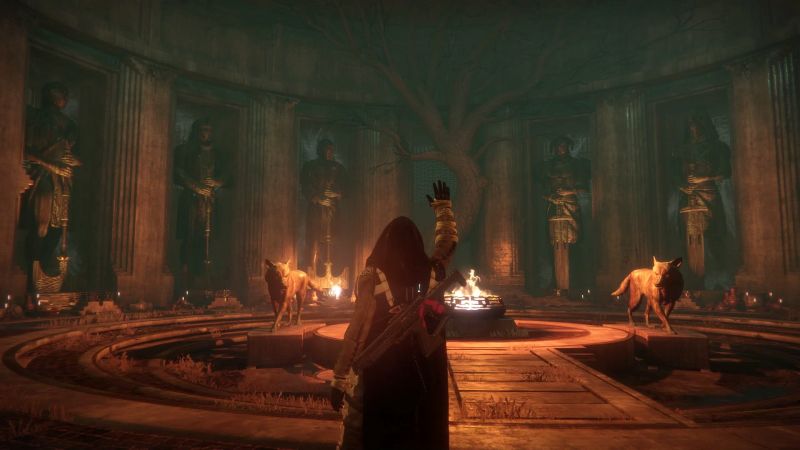
Rise of Iron functioned much more ably as a goodbye. Over and over it asked us to reminisce about our first moments playing Destiny. It made that busted first gun we got into a prized exotic weapon. It brought back the fabled rocket launcher Gjallarhorn — still the best gun name in the game, by the way — and had us re-forge it. My review became my own sort of goodbye:
At the end of one of Rise of Iron‘s later missions, you will find yourself looking down on the field of abandoned vehicles where the first Destiny mission began. Your little robot Ghost asks you to stand with him and take in the view. Oblige him, and he’ll reminisce about all you’ve seen and done together.
It’s a heavy handed attempt to inspire nostalgia for a two-year story that, taken in its entirety, has been cobbled together and vaguely unsatisfying. Sure, Ghost. I remember when you woke me up in that field of abandoned cars. You sounded like Tyrion Lannister then. You took me to meet a guy with no face, and he gave me a speech about The Traveller and The Darkness. I blew up some statues. A robot lady gave me a gun and then vanished forever.
Yet I still felt something, looking out over that snowy skybox. I remembered the friends I’ve made and the challenges we’ve faced over the last two years. I remembered the first time we beat Atheon, and how psyched I was to finally earn Thorn, and how I nearly lost my mind when Gjallarhorn dropped. I remembered the arguments we had over how to make it through the Thrall maze, and the time we stayed up till sunrise glitching our way to heights we weren’t meant to reach.
I remembered all the misguided ways Bungie has angered us, the poor decisions that have wasted our time, and the ways we’ve exploited the game that exploited us right back. I remembered those things and so many more. That was the journey, not any scripted mumbo-jumbo about the Light and the Darkness and whatever else.
Ghost was still talking. I bit my tongue. Even if he could hear me, he probably wouldn’t understand.
Bungie made a few subsequent attempts to get players like me back into Destiny, but they all failed to different degrees. I didn’t really want to re-play old raids yet again. I grew tired of the largely stale PvP meta and longed for the days when Trials of Osiris was new and exciting. I didn’t care about my light level and with a sequel on the horizon, I couldn’t get too excited about loot.
Last spring, as my old raid buddies and I limped through a couple hours of the revamped Vault of Glass, I realised I was done.
Over the last three years, I’ve spilled tens of thousands of words on Destiny. I’ve charted the highs and the lows and experienced highs and lows of my own. I wonder if I’ll experience the sequel in the same way. Hell, I wonder if I’ll experience any other game the same way.
Time will tell; today is about remembering the game as it was. Three years is a lot of time, and I’m glad I spent so much of it with Destiny.
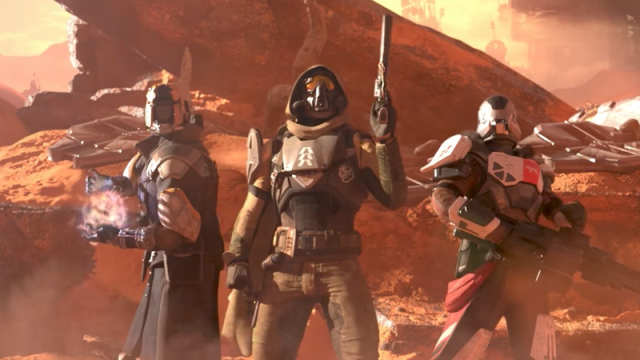
Comments
6 responses to “3 Years Of Writing About Destiny”
It’s telling that all the best memories of Destiny are social and mechanical, not plot based.
And it’s worrying that the plot is what they’re choosing to double down on for the sequel.
What an interesting read, but it, like when watching people like Datto’s retrospective and a few other things of recent times I sometimes think people lose perspective that they are playing a game and that Bungie or the game itself arent a begrudged family, that arent required to give us anywhere near the amount of love as players expect and certainly not always in the way we want. The players say they are only coming from a place of love, but if unmatchable and unattainable perfection is a sign of love, its not the good type. When I watched Datto’s thing he was hating on virtually everything they every did, no decision seem to satisfy him, I was left wondering some gamers really do set some unrealistic goals for games.
Now I love Destiny, somehow even with its flaws it is my second most played game ever in like almost 4 decades of gaming. I dont know why, or how, it just is. Like so much, dislike other things. Its one of those games that keep drawing me back, yet I knew also when to walk away for a few months, I did so without whining about this and that, the things I didnt like or silly decisions. I keep perspective that it was a game, and there is no way of earth the devs could ever match what I wanted in my head. The flaws were with me, not them. Their job isnt to make THAT flawless game I wanted, but to make the game they wanted. Some gamers dont know its better to walk away sometimes, to understand why you like something.
Thanks for a great read its been an interesting few years.
….. But have you played Warframe? It was first. Its better. And unlike Destiny, the devs are actually developing the game, instead of starting over…. Like, the ONLY good thing about Destiny 2 is that there putting it on PC….
I’ve played both and Warframe never hooked me in the way Destiny did. I’m glad you enjoy it more, but it’s not everyone’s cup of tea.
Ah Destiny….I kinda miss it.
Maybe I should play this game.
For another 2000 hours